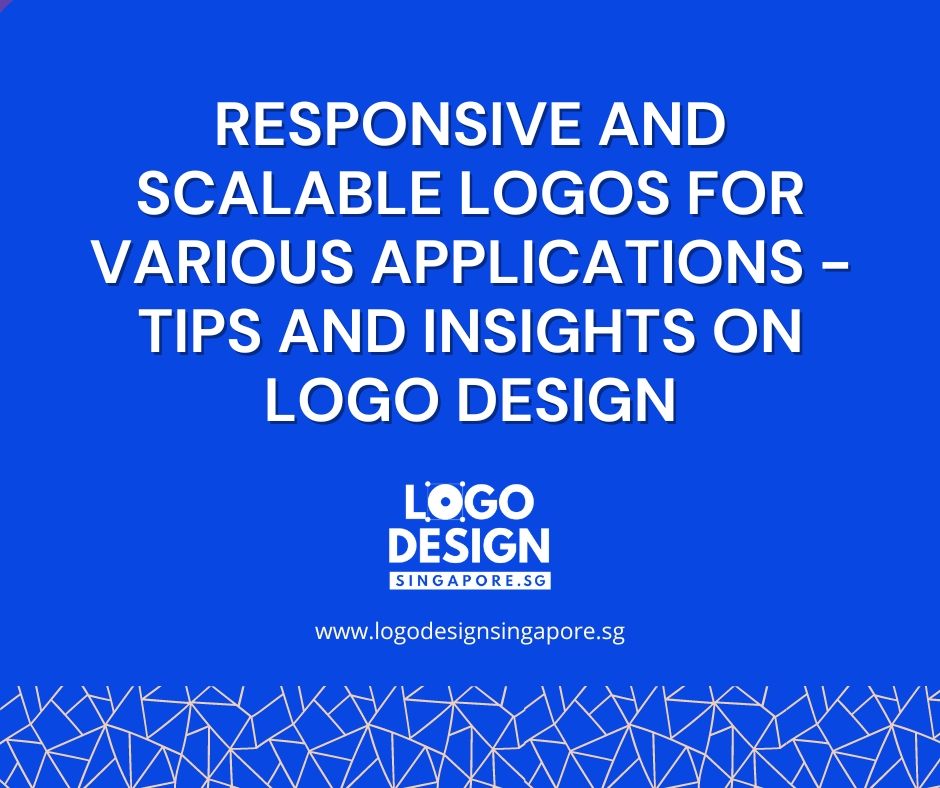
In the ever-evolving land of web design, one must always strive to be at the forefront of innovation. And what better way to do so than by maximizing logos/” title=”Maximizing Web Performance with Scalable Vector Graphics (SVG) Logos”>web performance with the power of SVG vector logos! Gone are the days of pixelated, clunky images slowing down your site – say hello to sleek, scalable logos that will make your competition green with envy. So grab your imaginary cape and get ready to soar through cyberspace with style, because we’re about to dive into the world of SVG logos and never look back! Let’s embrace the future of web design together, one vector at a time.
Understanding SVG Vector Logos
So, you’ve heard about SVG vector logos and you’re scratching your head trying to figure out what they actually are. Fear not, my confused comrade! Let’s break it down for you in a way that even your tech-illiterate grandma can understand.
First things first, **SVG stands for Scalable Vector Graphics**. Basically, it’s a fancy way of saying that these logos are super versatile and can be resized without losing any quality. No more pixelated messes when your logo gets blown up to billboard size!
One of the greatest things about SVG vector logos is that they are **editable**. That’s right, you can tweak the colors, shapes, and sizes to your heart’s content. Want your business logo to sport a snazzy new color scheme for the holidays? Easy peasy lemon squeezy!
And here’s the kicker – **SVG logos are web-friendly**. They load faster than a pizza delivery guy on a Friday night, making your website look sleek and professional. So go ahead, give your brand a makeover with an SVG vector logo and watch your online presence soar to new heights!
Advantages of Using SVG Logos on Websites
Using SVG logos on websites can bring a multitude of benefits that can enhance the overall user experience and functionality of a website.
One major advantage of using SVG logos is their scalability. SVG logos can be resized without losing quality, ensuring that your logo will look crisp and clear no matter what device or screen size it is viewed on. Say goodbye to pixelated logos that make your brand look like it’s stuck in the early 2000s!
Another perk of SVG logos is their ability to be easily customized using CSS. Want to change the color of your logo to match a new branding scheme? No problem! With just a few lines of code, your logo can be transformed into a whole new look without having to create multiple versions of the same logo image. It’s like having a chameleon logo that can adapt to any design environment.
Furthermore, SVG logos are lightweight in file size, meaning faster load times for your website. No one likes waiting around for a website to load, especially when it’s just to see a logo. With SVG logos, you can have your cake and eat it too – a sleek, professional logo that doesn’t slow down your website’s performance. So why settle for boring, static logos when you can level up your website with SVG awesomeness
Optimizing SVG Logos for Web Performance
So, you’ve got yourself a snazzy SVG logo for your website, but it’s slowing down your page load time? Fear not, my friend! We’re here to help you optimize that bad boy for top-notch web performance!
First things first, let’s talk about those unnecessary elements in your SVG logo. Do you really need that fancy drop shadow or that intricate pattern that no one really notices? Trim the fat, my friend! Simplify your logo to only include the essential elements that make your brand stand out.
Next up, let’s talk about optimizing the code itself. Make sure to clean up any unnecessary attributes or groupings in your SVG file. Remember, every byte counts in the world of web performance! Use tools like SVGO or SVGOMG to help you minify and strip out any excess baggage from your SVG code.
Now, let’s address the size of your SVG logo. No one wants to wait around for a massive logo to load, am I right? Make sure to resize your SVG file to the appropriate dimensions needed for your website. Consider creating multiple versions of your logo for different screen sizes to ensure a crisp, fast-loading logo for everyone.
Lastly, consider using SVG sprites or inline SVG to further optimize the delivery of your logo on your website. By reducing the number of HTTP requests needed to load your logo, you can significantly improve your web performance. So, go forth and optimize your SVG logo like a boss! Your website visitors will thank you for it.
Implementing SVG Logos in Your Website Design
So you want to jazz up your website design with some snazzy SVG logos, huh? Well, buckle up because we’re about to take a deep dive into the world of scalable vector graphics. Trust me, it’s going to be a wild ride!
First things first, forget about those boring old PNG logos. SVG is where it’s at, baby! These bad boys are resolution-independent, meaning they will look crisp and clean on any screen size. No more pixelated messes ruining your website’s aesthetic. It’s time to level up and make your site look like a million bucks!
Now, you might be wondering how the heck you actually implement these SVG logos into your design. Fear not, my friend, for I am here to guide you through the process. All you need to do is embed the SVG code directly into your HTML. It’s as simple as that! No more messing around with clunky image files that slow down your site’s loading speed. SVG logos are lightweight and super easy to work with. It’s like magic, but without all the hocus pocus.
So there you have it, folks. SVG logos are the way to go if you want to take your website design to the next level. Say goodbye to outdated graphics and hello to sleek, modern visuals that will make your site pop. So what are you waiting for? Get out there and start implementing SVG logos in your design today! Your website will thank you.![]()
Best Practices for Using SVG Logos for Maximum Performance
So, you’ve decided to spice up your website by using SVG logos – great choice! But just like a car needs oil changes to keep running smoothly, SVG logos need to be optimized for maximum performance. Here are some best practices to ensure your SVG logos are sleek, snappy, and ready to impress:
– **Keep it Simple**: Just like your dating profile, less is more when it comes to SVG logos. Stick to clean lines and simple shapes to keep file sizes small and load times fast. Your logo may be intricate, but that doesn’t mean your SVG version has to be. Remember, it’s all about that #PerformanceGoals.
– **Optimize, optimize, optimize**: If your SVG logo were a car, you’d want it to be a sports car, not a clunky old minivan. Optimize your SVG files by removing unnecessary elements, minimizing code, and compressing with tools like SVGO. Your logo will thank you by loading faster and looking sharper than ever.
– **Lazy Loading for the Win**: Just like a cat lying in the sun, lazy loading your SVG logos can save energy and boost performance. By only loading logos when they’re in the viewport, you can prevent unnecessary strain on your website and keep everything running smoothly. Plus, your users will thank you for not bogging down their browsing experience with unnecessary files.
So there you have it, folks – the keys to unlocking the full potential of your SVG logos. Follow these best practices, and your logos will be shining brighter than a disco ball on New Year’s Eve. Get out there, optimize like a pro, and watch your website performance soar to new heights!
Testing and Monitoring Web Performance with SVG Logos
We all know the struggle of creating a visually stunning website, only to have it load slower than a dial-up connection in the 90s. But fear not, my friends! With the power of SVG logos, you can now test and monitor your web performance with ease.
Picture this: you’re sitting at your desk, sweating bullets as you hit refresh on your browser for the hundredth time. With SVG logos, you can finally put your mind at ease and track your website’s loading times with precision.
Gone are the days of staring at a loading screen for what feels like an eternity. With SVG logos, you can optimize your website’s performance and ensure that your users have a seamless experience every time they visit.
So why wait? Harness the power of SVG logos today and say goodbye to slow loading times forever. Your website – and your sanity – will thank you.
FAQs
Will using SVG vector logos really improve my website’s performance?
Absolutely! SVG vector logos are lightweight and scalable, making them load faster and look sharp on any device. Say goodbye to pixelated logos slowing down your site.
Do I need special software to create SVG vector logos?
Not necessarily. You can use graphic design tools like Adobe Illustrator or free online editors like Inkscape to create SVG vector logos. Just remember to save them in the SVG format for maximum performance.
Can I use SVG vector logos on any website platform?
Most modern website platforms support SVG images, but it’s always a good idea to check with your specific platform to ensure compatibility. You wouldn’t want your fancy new logo to go to waste!
Will using SVG vector logos affect my website’s search engine optimization (SEO)?
Fear not, fellow SEO enthusiast! SVG vector logos won’t harm your website’s SEO efforts. In fact, their faster loading times and crisp appearance can actually boost your site’s ranking in search results.
Are there any downsides to using SVG vector logos?
Well, if you’re a fan of bulky, pixelated logos that slow down your website and annoy your visitors, then yes, there may be a downside. But for the rest of us looking to maximize web performance, SVG vector logos are a no-brainer.
Time to Level Up Your Web Performance!
Congratulations on reaching the end of this article! Now that you’ve learned all about the magic of SVG vector logos and how they can supercharge your website’s performance, it’s time to put that knowledge into action. Say goodbye to pixelated logos and sluggish load times – it’s time for your website to shine like a beacon of awesomeness in the vast sea of the internet.
So go forth, dear reader, armed with your newfound wisdom and a kick-ass SVG logo in hand. May your website load faster, look sharper, and leave your competitors in the dust. And remember, when it comes to web performance, SVG is the real MVP. Happy optimizing!












